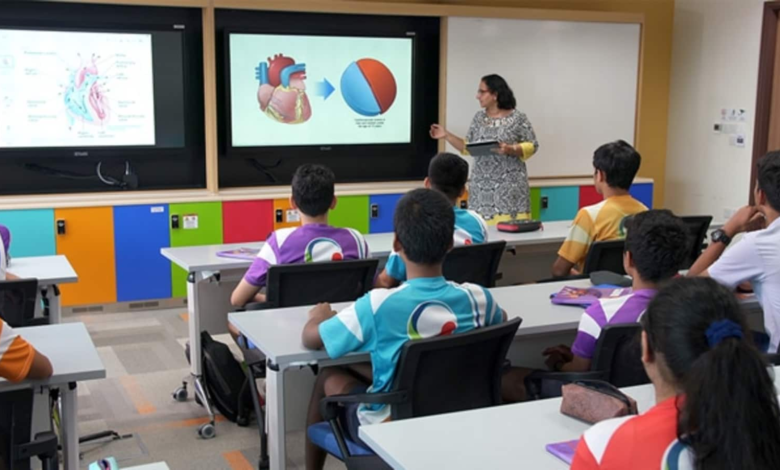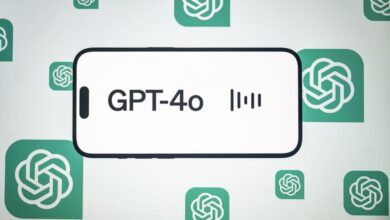Leveraging the power of AI: Strategies to Ensure the Responsible Use of Generative AI in Education

As generative AI (GenAI) technologies continue to expand their reach, their influence is becoming increasingly evident across a spectrum of industries, including education. This ongoing transformation is fundamentally reshaping the education landscape, with GenAI being harnessed for adaptive learning solutions, personalized educational tools, and streamlined processes.
This technological progression mirrors the shifting preferences of contemporary learners, who are progressively embracing digital experiences as part of a broader movement towards lifelong learning and alternative educational pathways. In light of these developments, EdTech firms, content providers, and educational institutions stand poised to leverage innovative technical solutions to cater to the burgeoning demand for diverse learning modalities.
However, the integration of generative AI in education is not without its challenges and considerations. While there is considerable promise for enhanced learning outcomes, improved teacher instruction and well-being, and greater equity within the educational system, there are also risks to be navigated.
Also read: TBSE Results 2024: Tripura Board Class 10, 12 scores declared, direct link to check marks here
These include potential privacy breaches, disparities in disciplinary actions, and suboptimal utilization of AI tools in educational contexts. Therefore, it is imperative to confront these multifaceted challenges head-on and carefully deliberate the ethical implications associated with the deployment of generative AI in education.
Ethical Guidelines for Integrating Generative AI in Education
Outlined below are practical principles that educators, policymakers, and education leaders can consider as they devise strategies to facilitate the ethical and effective integration of AI in education:
Leveraging the Power of Generative AI to Enhance Education
AI should be utilized with a targeted approach to enrich the educational experience, placing a strong emphasis on the welfare of students and educators alike. It should be strategically deployed to advance academic objectives and streamline administrative processes while promoting inclusivity, and equity, and bridging the digital divide. Generative AI initiatives should align with the overarching educational vision, catering to the diverse needs and backgrounds of learners.
Also read: COMEDK UGET Result 2024 declared at comedk.org, direct link to check rank card here
Adherence to Current Policies in Generative AI Implementation
integration of generative AI in education must adhere to essential aspects of technology policy, encompassing privacy, data security, student safety, and data ownership. It is imperative to verify that AI utilization complies with prevailing regulations and ethical standards, with particular emphasis on safeguarding student privacy and ensuring data security.
Foster a Deeper Understanding of Generative AI
a comprehensive grasp of generative AI involves equipping both students and teachers with in-depth knowledge about its functionalities, constraints, ramifications, and ethical considerations. It is essential to empower them with the necessary competencies to engage responsibly with AI technologies, spanning disciplines such as computer science, psychology, ethics, data science, and more.
Recognizing AI’s Benefits and Addressing Its Risks
the potential benefits AI offers to education, it’s crucial to acknowledge and manage its associated risks effectively. Education systems should offer guidance on the responsible use of AI, ensuring alignment with community objectives such as enhancing student and teacher well-being and improving learning outcomes. Additionally, integrating AI education into the school curriculum can empower students to understand its strengths and weaknesses, fostering responsible technology use from an early age. This proactive approach equips students with the knowledge and skills necessary to navigate AI technologies responsibly and ethically.
Promote Academic Integrity
AI in academic practices brings forth both challenges and opportunities in upholding academic integrity. It is crucial to address the risks of plagiarism while harnessing AI to reinforce fundamental values such as trust, honesty, respect, fairness, and responsibility. While AI tools can assist in cross-referencing information, it is vital to recognize their limitations to preserve the integrity of authentic creation.
play a pivotal role in this endeavor by providing clear guidelines on the appropriate use of AI in assignments. Here are three levels of AI utilization that can be tailored based on the assignment’s nature:
Permissive: Students are permitted to freely utilize AI tools to support their assignments, including tasks like proofreading, idea generation, or content organization.
Moderate: Students may employ AI tools for specific elements of their assignments, such as initial research or brainstorming. However, the primary content and concluding remarks should be original and independently crafted.
Restrictive: AI tools are prohibited for the assignment, and students are required to generate all work entirely on their own, without any AI assistance.
Promote Human Involvement in AI Decision-Making Processes
AI-assisted decision-making processes, it’s vital to incorporate mechanisms for human intervention and approval. AI should act as a complement, enhancing the tasks of educators and administrators rather than entirely replacing them. This approach ensures that human judgment and expertise remain integral, fostering accountability, addressing potential biases, and upholding ethical standards in educational decision-making.
Continuously Assess the Impact of AI Integration
crucial to conduct regular evaluations of generative AI implementation to verify its alignment with educational goals and evolving legal standards. Seek input from various stakeholders, including educators, the EdTech industry, policymakers, parents, and students, to gather insights for ongoing enhancements and adjustments to AI policies and practices. This proactive approach enables informed decision-making and ensures that AI usage remains beneficial and ethically sound in educational settings.
Concluding Thoughts
Incorporating these generative AI principles organization-wide is essential to uphold the long-term safety, trustworthiness, and effectiveness of AI-powered EdTech initiatives. Responsible integration of AI into education has the potential to significantly enhance solutions and products, equipping learners with the skills needed to excel in an evolving digital landscape.
(Monica Malhotra Kandhari is the Managing Director and AASOKA & MBD Group. The views expressed are personal.)



